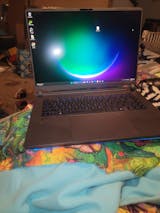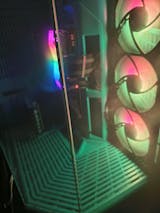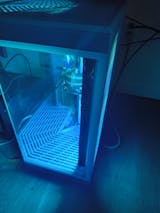Until recently, the thought of a gaming laptop was enough to make gaming enthusiasts laugh. After all, how could manufacturers fit so much power into such a small form factor? Nonetheless, the notebook sector is advancing. Gaming laptops are proving the doubtful wrong by leaps and bounds, which presents a problem when it’s time to decide between desktop and laptop gaming. In this guide, we provide seven tips for buying a gaming laptop, so you have the insight and specifications needed to make the best investment.
Seven Tips for Buying a Gaming Laptop
- Monitor: The monitor size of your next gaming notebook is the most obvious aspect to keep in mind. Small laptops are appealing in terms of portability, but they often lack the higher-end components you need to game on your terms. 17- or 18-inch laptops are usually more powerful because they have plenty of room for heat-generating components to breathe. If you’re looking for a gaming notebook you can take with you, look no further than a 15-inch notebook. These systems typically weigh between four and seven pounds. If you frequently travel to LAN events or tournaments, a 13- or 14-inch notebook is a sleek, portable solution. Panel resolution will also play a vital role in your decision. 1080p is primarily the standard. There are graphics cards with 4K display, but that degree of resolution can be taxing on hardware.
- Trackpad: Even if you use a gaming mouse, you should never settle for an average trackpad. These touch-sensitive interfaces allow you to manipulate and interact with your laptop just through finger gestures. Most gaming laptops don’t come with mice, so it’s important to gauge how well a trackpad feels. You will want a trackpad that allows two-finger scrolling, pinch-to-zoom, and much more.
- Keyboard: A quality gaming keyboard offers a decent sense of actuation force and should feel more tactile when you play, not mushy. Ideally, you want the keys delivering firm feedback without feeling uncomfortable to the touch. Keyboards should also offer customizable backlighting and anti-ghosting technology.
- Audio: Laptops have a reputation for subpar audio quality, but gaming laptops beg to differ. Some of the best laptop speakers available provide a decent amount of sonic punch, but you can also invest in audio software that offers surround sound in both headphones and speakers. You will want to invest in a quality pair of gaming headphones for gaming on the go.
- Ports: If you’re looking for a desktop replacement, it’s important to invest in all the ports you need to use your USB devices. Some laptops don’t come with SD card slots or HDMI connectivity for monitors, which can be a major deterrent when shopping around.
- Battery Life: In this midst of an extended gaming session without a nearby outlet, battery life plays a vital role. Bigger batteries mean more heat and weight, but you can always invest in a rechargeable battery pack to squeeze in extra gaming time.
- CPU: Quad-core laptops are optimized for gaming, but anything above four cores will generally go to waste with nothing to do. Processor frequency is also important because it determines how fast the CPU operates. AMD and Intel® are the two leading CPU manufacturers, but you’ll want to save enough money to invest in a quality graphics card and extra memory.
We hope that this buying guide gives you the confidence to shop and invest in a new gaming notebook. Don’t make the mistake of buying a gaming laptop to play low-end games such as World of Warcraft or Candy Crush. Games such as these are supported by integrated graphics cards. You should also avoid buying a touch-screen laptop. Although touchscreen capability is practical for everyday tasks, it’s costly and will drain your laptop’s battery. If you have any questions or would like to learn more about our laptop selection, please contact XOTIC PC today to learn more.














